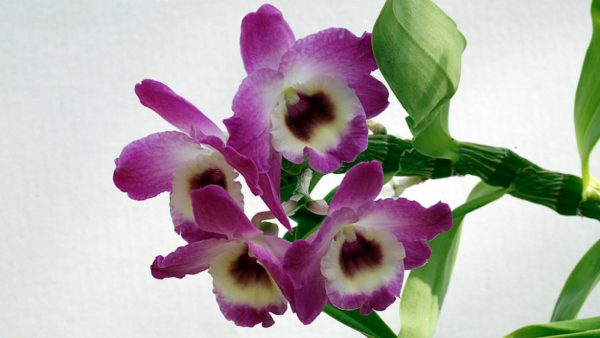
Basically, in the local flower shops you can see two types of orchids, this is how the Dendrobium Phalaenopsis and Dendrobium Nobile planted. In general, they are similar, but they have distinctive features in the flowers, which is noticeable with careful study, and their care regimen is also different. Speaking about the form of the Dendrobium Phalaenopsis, which is named because of similarities with the Phalaenopsis plant, it is worth first considering the main rules of care.
Content
Dendrobium Phalaenopsis Care
Dendrobium Phalaenopsis home care is very simple. It will develop quickly and unhindered in plastic pots or from other material that you may like more. Often, cork oak blocks or a coconut shell carefully cleaned are used for this purpose. Dendrobium Phalaenopsis is not classified as a parasitic plant; tree trunks, where it grows in a natural environment, are needed by the plant as a support.
Lighting
Many experienced gardeners who are well versed in Dendrobium Phalaenopsis orchids claim that this species needs average light conditions. A great place in the house to place your orchid on the windowsill on the east side. If you have a shaded sill on the south side, this can be a good alternative.
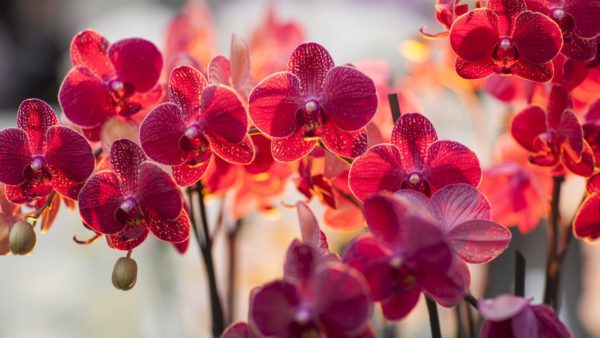
Temperature
Dendrobium Phalaenopsis and its care at home can not do without maintaining the correct temperature values. Daytime temperature is from 23.8 C to 29.4 C and nighttime temperature is from 15.6 C to 18.3 C. This orchid grows better when the difference between daytime and nighttime temperatures is from 8.3 C to 11.1 C.
Watering
An orchid of this species should be watered in the morning. Caring for Dendrofalenopsis in this regard requires the use of cool water. The irrigation schedule for the plant may depend on the type of pot in which the orchid is planted, temperature, and also the time of year. As a rule, you need to water the orchid more often in the warmer months and less often in the cooler months. While Dendrobium is in active growth, the roots and culture medium should be moist (watered about once a week), but dryness will not damage the orchid when it is no longer active.
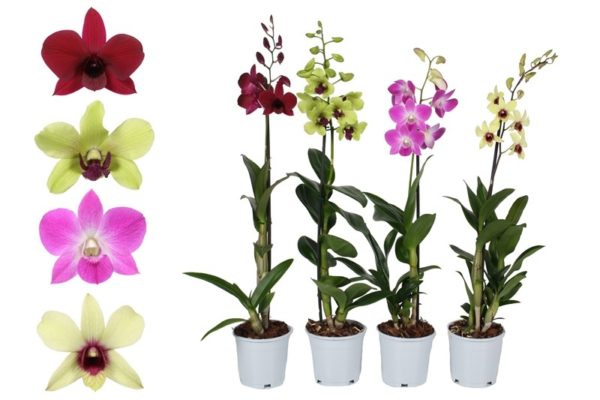
Humidity
When caring for Dendrobium Phalaenopsis, it is necessary to monitor the humidity. Orchid Dendrobium in this regard is not capricious, the Phalaenopsis orchid requires a humidity range for cultivation - 50-60% humidity. If you need to increase the humidity of the environment, you can place an orchid next to the humidifier. Remember that you must have sufficient air movement for your orchids. The room should be regularly ventilated.
Pruning
Very often, flower growers doubt whether it is necessary to prune the plant after flowering. This is only allowed when the orchid begins to dry. In this case, pruning is carried out carefully with sanitized sharp scissors. Orchid Dendrobium Phalaenopsis will not benefit from this procedure if it still has green buds on a pseudobulb.
Pot selection
In the case of cultivation, it is better to give preference to a clay pot, which will provide the plant with guaranteed stability. The size of the pot should be guided by the size of the root of the plant.It should freely exit the pot. It is important that the distance from the sides is not less than 1 centimeter. Orchid Dendrofalenopsis can also develop well in a plastic pot.
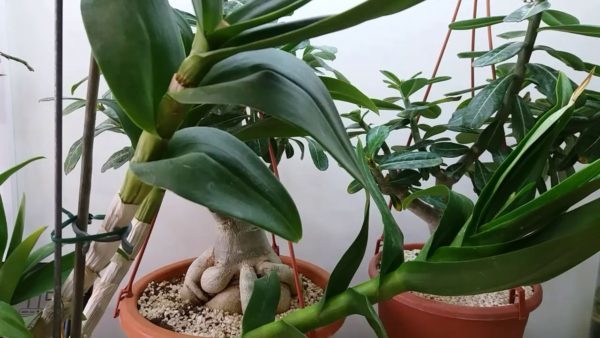
Transplant Rules
Orchid dendrofalenopsis needs this procedure every two years, or when the ground becomes damp and moisture is not so well absorbed by the roots. Before re-planting, you need to remove all the old medium and trim the damaged roots with a sterile cutting tool. This type of plant tends to grow better in smaller pots, where the roots fit snugly together, however, as soon as the roots begin to outgrow the pot, the time has come to transplant.
Period of stagnation
There is no pronounced period of stagnation in the orchid. However, it ceases to grow rapidly in a period when the amount of daylight is reduced. In the autumn and winter, you can notice that the green top of the orchid no longer develops, and the root system is also stopped in development. This is a normal occurrence. To maintain the orchid during stagnation, you need to reduce the frequency of watering.
Top dressing
Orchid Phalaenopsis Dendrobium care at home needs regular feeding when it is in the growth phase. Fertilizing every two to three weeks during the summer months and once a month in winter should be enough.
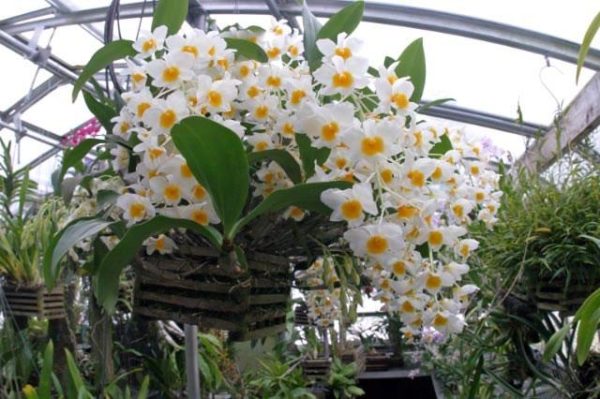
Breeding
Reproduction Dendrobium Phalaenopsis occurs vegetatively. Before propagation, the plant must go through a flowering phase. When the pseudobulb has ripened, a peduncle will appear on it. On it, in turn, buds will form that bloom into flowers. One pseudobulb can contribute to the flowering period twice, but only if the ideal care regimen.
The flowering process often occurs in the spring-summer period. Dendrobium Phalaenopsis and its varieties may be different and have an effect on flowering time and its features. The variety also determines the shade of the flower, it can be white, purple, pink and lilac.
Owners of the Dendrobium Phalaenopsis need to know that when the kids went after flowering, the time has come for reproduction. Separation of children occurs after their complete formation. The connection point is dried after separation, for which children are left on the street for a day. For planting Dendrobium Phalaenopsis, you need better quality soil and bark (fraction - from 5 to 10 mm).
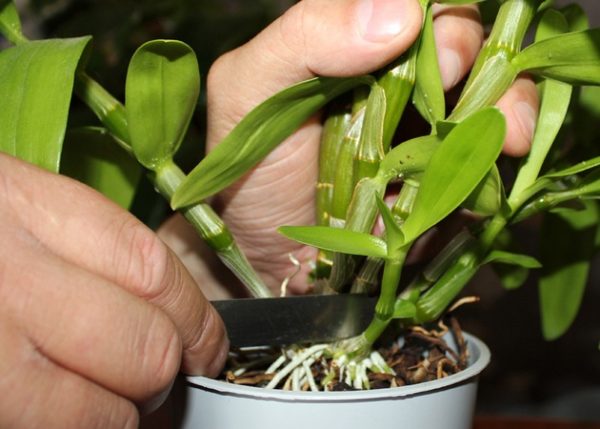
There are two alternative breeding options: cuttings and dividing the bush. Both options are carried out after flowering. Well, you already know how the Dendrobium Phalaenopsis blooms.
Outdoor content
Dendrobiumphalenopsis is not recommended for outdoor cultivation. The conditions of the middle climatic band are not suitable for the normal development of the plant. The correct temperature regime is one of the main conditions for the normal growth of this type of orchid.
Possible diseases and pests and methods of dealing with them
Very often, orchid owners complain about the lack of flowering. This happens due to poor lighting. This factor can also affect the size of pseudobulbs. Often the wrong lighting mode can cause a discoloration of the leaves of the plant. Not many people know that a marbled shade of leaves may indicate an insufficient amount of nutrients in the soil. In this case, the plant may need additional nutrition.
You need to monitor the leaves and to determine the presence of pests. So the yellow color of the leaves is the first wake-up call.Change the temperature regime and follow the plant, if there are no changes in the positive direction, most likely the plant is faced with an attack of pests.
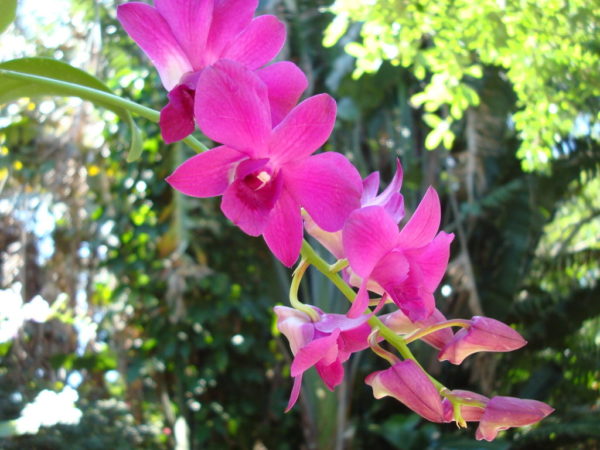
The main enemies of Dendrobium Phalaenopsis can be considered aphids, mealy worms and, of course, herbivorous mites. If in the case of diseases it is enough to establish a care regimen, then to control pests, it will be necessary to completely clean the leaves of the plant and treat them with special preparations.
Reviews
Many owners of dendrobiumphalenopsis note that this type of orchid is ideal for those who want to grow this flower at home for the first time. A good variety to start with is a variety called Sonia. Experienced growers also highly recommend it.
Many reviews indicate that the Dendrobium Phalaenopsis is really not as difficult to care for as many of its "brothers." The main condition is to adhere to the temperature regime, watering and lighting conditions. Over time, it will be much easier to navigate the possible problems in the development of the plant and their elimination.

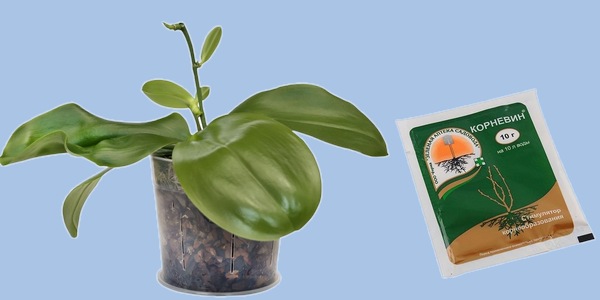
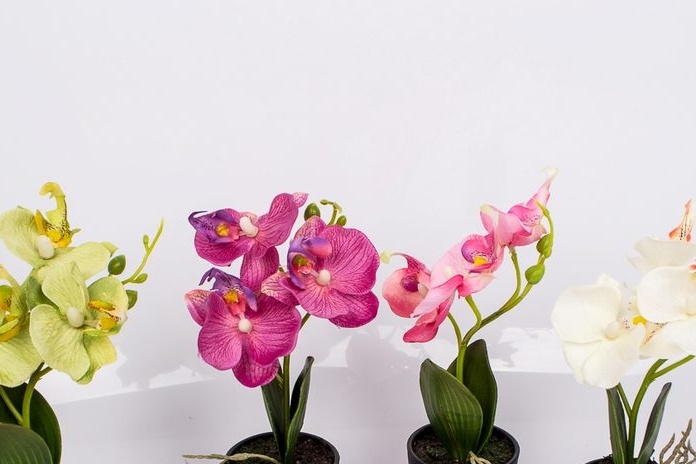
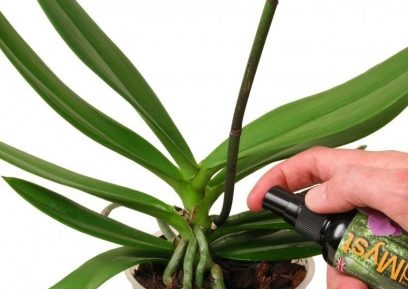
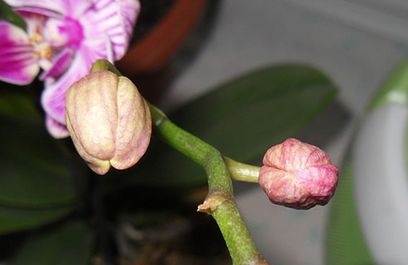 Reasons why orchids fall flowers and what to do
Reasons why orchids fall flowers and what to do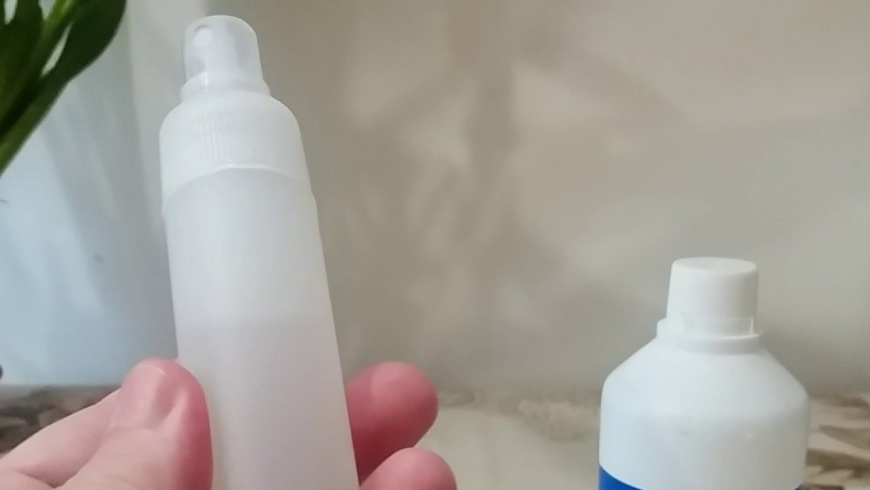 How to use hydrogen peroxide for orchids and why
How to use hydrogen peroxide for orchids and why Midges are wound up in the orchid: effective ways to get rid
Midges are wound up in the orchid: effective ways to get rid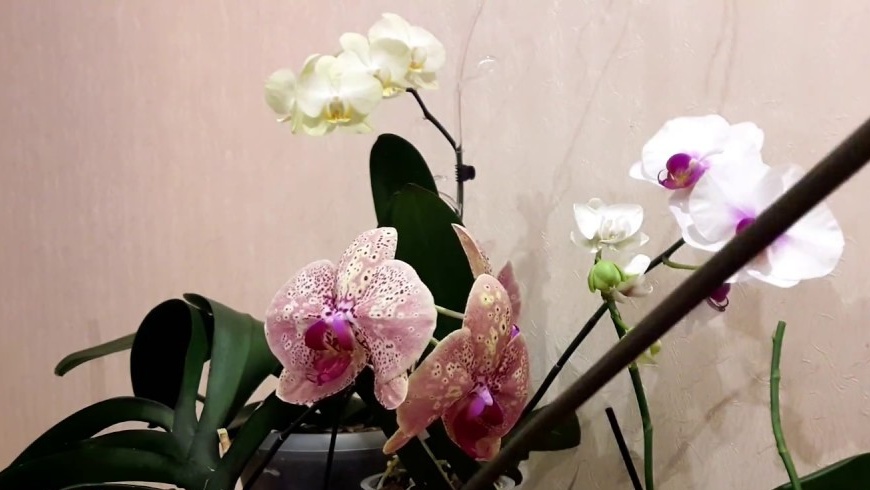 Is it possible to transplant an orchid during flowering
Is it possible to transplant an orchid during flowering